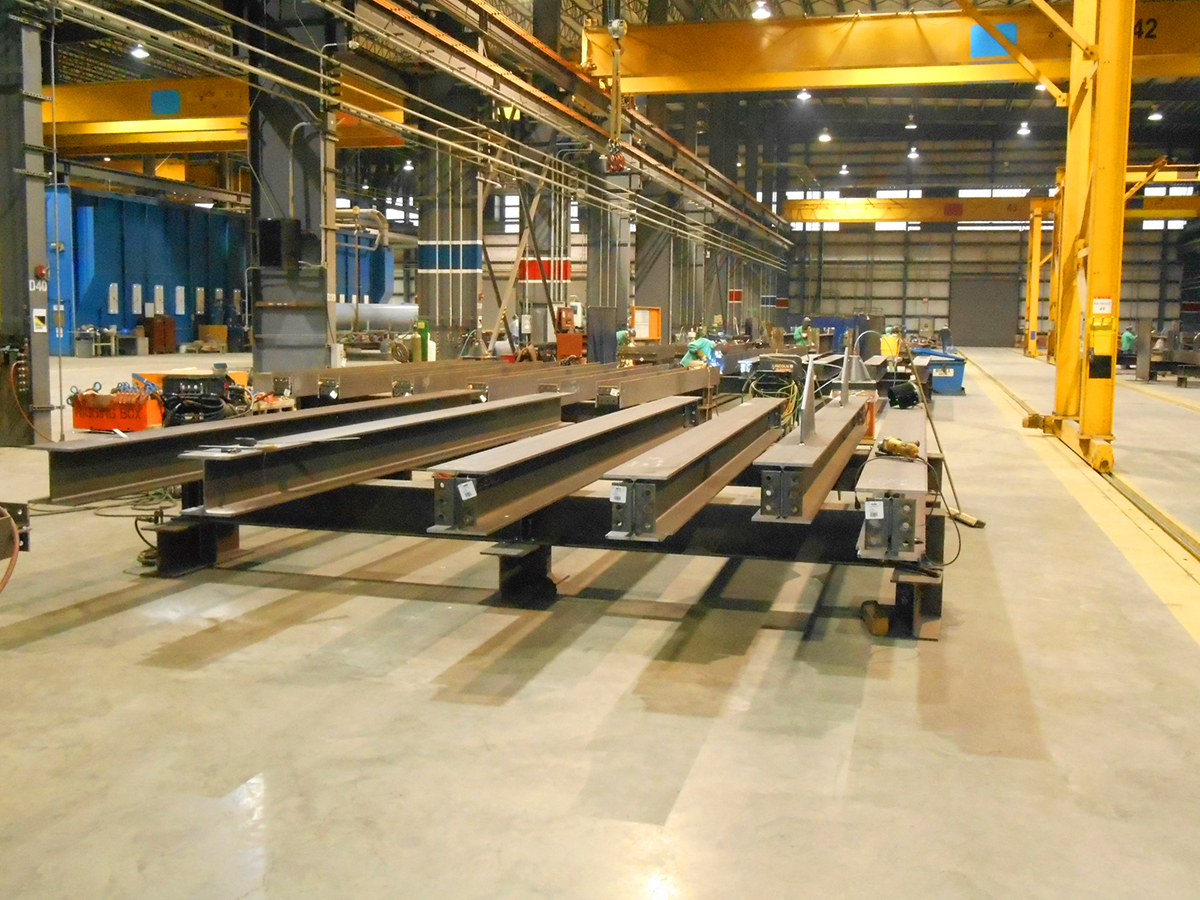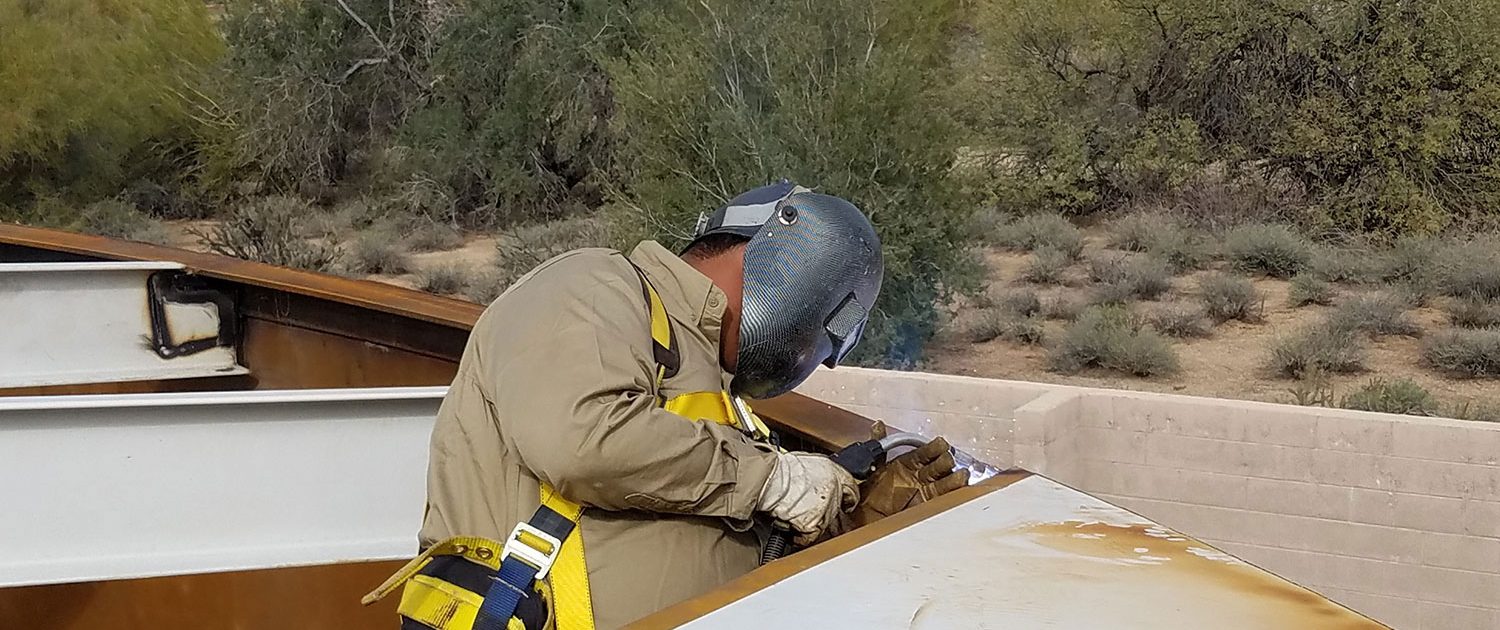Alpha Reo: Blazing A Trail in Reinforced Steel Solutions
Alpha Reo: Blazing A Trail in Reinforced Steel Solutions
Blog Article
Cutting-edge Fads in Steel Fabrication: Enhancing Toughness and Precision
In the realm of steel fabrication, the search of toughness and precision has actually resulted in a wave of cutting-edge patterns that are improving the market. From developments in welding technologies to the assimilation of robot automation in fabrication procedures, the landscape of steel manufacturing is evolving swiftly. High-strength alloy development, combined with the utilization of 3D modeling and simulation software program, is pushing the borders of what is attainable in regards to architectural honesty and accuracy. The growing emphasis on lasting techniques in steel production is not only driving performance yet also cultivating a more ecologically aware approach to construction. These patterns are not just forming the existing but likewise preparing for the future of steel construction, assuring more improvements in sturdiness and precision.
Advanced Welding Technologies
In the realm of steel manufacture, the adoption of cutting-edge welding innovations has actually substantially revolutionized the industry's method to achieving premium quality and accuracy in structural welds. Advanced welding modern technologies, such as laser light beam welding and friction mix welding, have actually emerged as game-changers in the area. By leveraging these sophisticated welding methods, steel producers can raise the resilience, toughness, and precision of their structural welds, fulfilling the progressively requiring needs of contemporary building and construction projects.
Robotic Automation in Construction
Welcoming robotic automation has come to be a cornerstone of modern steel manufacture methods, enhancing and improving procedures performance throughout the market. Robots are revolutionizing the way steel elements are produced, using unrivaled precision and rate while lowering human mistake. These automated systems can handle repetitive tasks with consistent accuracy, causing better final product.
One trick advantage of robotic automation in steel fabrication is the capability to work around the clock without tiredness, considerably raising manufacturing result. This continual procedure decreases downtime and increases project timelines, inevitably conserving prices for suppliers. Additionally, robots can be programmed to carry out intricate tasks that might be harmful or difficult for human workers, improving safety in the work environment.
Additionally, robot automation enables smooth combination with other digital modern technologies, such as computer-aided style (CAD) software and Internet of Things (IoT) systems (Alpha reo). This interconnected technique boosts communication in between various phases of manufacture, enhancing workflows and ensuring real-time monitoring and control. As the steel fabrication industry continues to progress, robot automation stands apart as a transformative force driving effectiveness and precision in making processes

High-Strength Alloy Advancement
The innovation of high-strength alloy growth in steel manufacture is improving the sector's strategy to boosting product toughness and efficiency. High-strength alloys are crafted to show remarkable mechanical buildings, such as raised tensile stamina, sturdiness, and deterioration resistance contrasted to standard steel grades. By incorporating these sophisticated alloys into construction processes, manufacturers can generate elements that stand up to greater tension levels and harsh settings, causing more trustworthy and long lasting end products.
One trick advantage of high-strength alloy advancement is the ability to reduce product thickness without compromising architectural published here integrity. This not only causes lighter-weight elements but likewise adds to set you back savings and enhanced performance in construction and assembly processes. In addition, the boosted strength-to-weight proportion of these alloys allows for the style and construction of structures with higher load-bearing capabilities while reducing total weight.
3D Modeling and Simulation Software Program
Improvements in steel construction processes have been dramatically propelled by the integration of cutting-edge 3D modeling and simulation software devices. These tools allow fabricators to develop thorough digital versions of their jobs, allowing them to picture the final product with precision before any physical work begins.

Sustainable Practices in Steel Manufacturing
Incorporating lasting practices into steel manufacturing processes is vital for reducing ecological impact and making sure long-term resource schedule. One key sustainable technique is the adoption of energy-efficient modern technologies to minimize greenhouse gas discharges throughout the steel manufacturing procedure. This consists of using sustainable energy sources, such as solar or wind power, to power steel plants and applying energy-efficient equipment to enhance power use.
Another critical element of visit here lasting steel manufacturing is the responsible sourcing of resources. This includes making certain that the iron ore and other sources made use of in steelmaking are gotten from ethical and environmentally friendly sources. By promoting openness in the supply chain and sticking to rigorous ecological criteria, steel producers can reduce the unfavorable influences of source removal on neighborhood communities and neighborhoods.

Verdict
In final thought, the innovative fads in steel manufacture such as innovative welding innovations, robotic automation, high-strength alloy growth, 3D modeling and simulation software program, and lasting methods are enhancing the resilience and accuracy of steel products. These advancements are changing the steel construction market by improving performance, high quality, and sustainability. It is clear that the future of steel fabrication exists in accepting these sophisticated innovations to fulfill the demands of modern-day construction and production industries.
In the world of steel fabrication, the quest of durability and accuracy has actually led to a wave of innovative patterns that are improving the industry.In the world of steel manufacture, the adoption of innovative welding technologies has dramatically transformed the sector's approach to accomplishing premium high quality and accuracy in architectural i loved this welds. As the steel fabrication industry continues to progress, robot automation stands out as a transformative force driving effectiveness and accuracy in making processes.
Additionally, recycling and recycling steel scrap and waste materials play a considerable function in boosting the sustainability of steel manufacturing. steel fixing.In verdict, the cutting-edge trends in steel manufacture such as sophisticated welding technologies, robot automation, high-strength alloy development, 3D modeling and simulation software program, and sustainable practices are enhancing the sturdiness and accuracy of steel items
Report this page